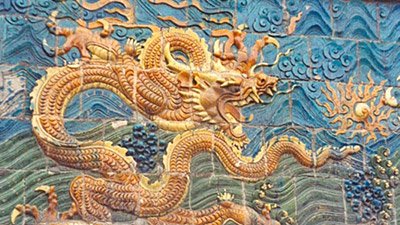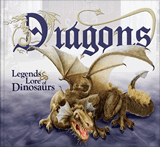
The Dragon Is the Only Mythical Animal on the Chinese Zodiac—or Is It?
The Year of the Dragon
Chinese New Year 2024 will fall on Saturday, February 10, 2024. This means the Year of the Rabbit ends on February 9, and the Year of the Dragon (which coincidentally, this author is a member of) starts on February 10 according to the Chinese zodiac. Unlike the Gregorian calendar where New Year’s Day consistently occurs on January 1, the date of Chinese New Year changes every year, but it always falls between January 21 and February 20, usually the second new moon after the winter solstice. And unlike the usual one-day holiday for New Year’s (or two days for New Year’s Eve and Day), China’s public holiday for Lunar New Year is eight days, from Chinese New Year’s Eve to the sixth day of the lunar calendar new year.
Why an Article About a Chinese Zodiac Sign?
Don’t worry, we’re not going to discuss what type of personality traits, best career choices, or the lucky (or unlucky) status of someone born under the dragon sign. We obviously don’t give credence to astrology. But there is an interesting and creation-themed reason for covering this topic which we will unpack below.
The 12 animals of the Chinese zodiac are (in order) Rat, Ox, Tiger, Rabbit, Dragon, Snake, Horse, Goat, Monkey, Rooster, Dog, and Pig. As can be seen from the list, all the animals, except the Dragon, are everyday, common animals that inhabit parts of China and would have been known to everyone (with the possible exception of the Tiger, which mainly inhabits mountainous and forested regions). In other words, they were not mythical animals. It is true that dragons are quite common in Chinese celebrations, art, and plays, but they are usually waved off as “mythical creatures” or “supernatural beings.” But why would the dragon be the lone exception on the Chinese zodiac?
The ancient Chinese saw real dragons (dinosaurs and pterosaurs) and interacted with them, although these creatures are now (likely) extinct. For example, Chinese emperors often wore robes depicting dragons, and the embroidering of dragon patterns on the emperor’s robe dates back to as early as the Shang Dynasty (c. 1600–1050 BC). “But it was not until the Qing Dynasty ([AD]1644–1911) that they were named ‘dragon robes’ and became part of the official attire system. The robe embroidered with dragon patterns was made for the exclusive use of an emperor”1 (Figure 1).
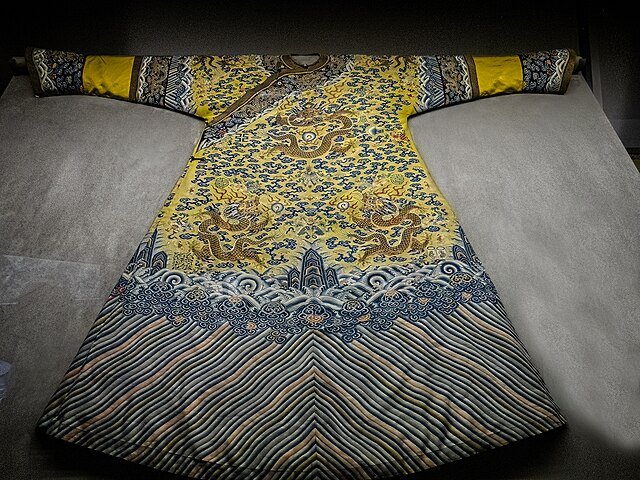
Figure 1. A Qing Dynasty imperial robe embroidered with dragons (AD 1736–1795). Mary Harrsch, CC BY-SA 4.0, via Wikimedia Commons
Chinese Dragons in Art
Many examples of dragons in Chinese depictions exist as tapestries, figurines, art, and architecture (Figures 2–6 below), dating back to the Shang Dynasty c. 1600–1050 BC. The Shang Dynasty is often considered the second Chinese dynasty, after the Xia (c. 2080–1600 BC). The Xia Dynasty founding dates accord well with the biblical timeline of people migrating from Babel in c. 2200 BC. Although secular historians claim that these depictions of dragons were just cultural mythos (and imperial propaganda, in that some emperors claimed to be somehow mystically descended from dragons), the sheer amount of dragon depictions in many art forms (figurines, weapon handles, ornaments, sketches, etc.) across millennia would argue against that point.
While Chinese dragon depictions range from visually stunning to fantastical, this may not be what secular interpretations insist (that the artists or craftsmen were trying to pick aspects of certain “common” animals like horses, dogs, sheep, etc. and then formed them into some weird mythical chimera). It could just as easily be the result of artists trying to incorporate the various types of dinosaurs, marine reptiles, and pterosaurs into their historical records. Perhaps the cultural perception was that these different varieties were the growth stages of a single creature, or perhaps artists wanted to portray all the features by combining them into one.
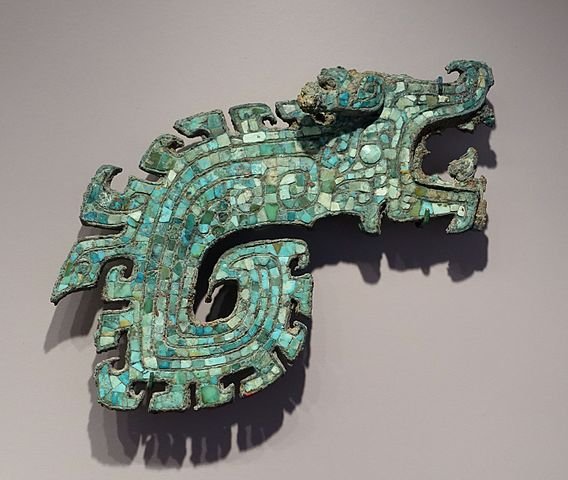
Figure 2. A Shang Dynasty Dragon Weapon Handle (c. 1300–1100 BC). Daderot, Public domain, via Wikimedia Commons
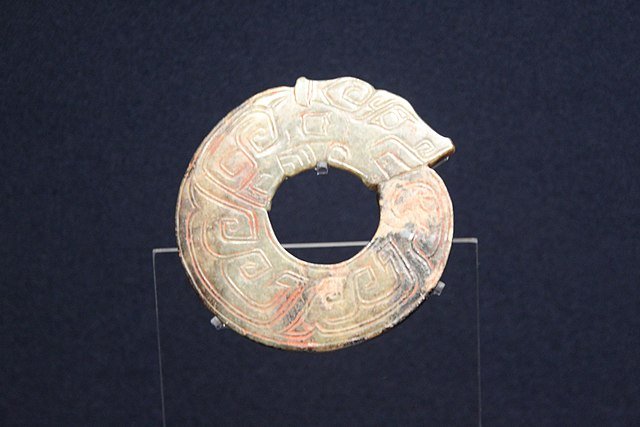
Figure 3. A Shang Dynasty Dragon Ornament (c. 1100–1000 BC). Gary Lee Todd, Ph.D., CC0, via Wikimedia Commons
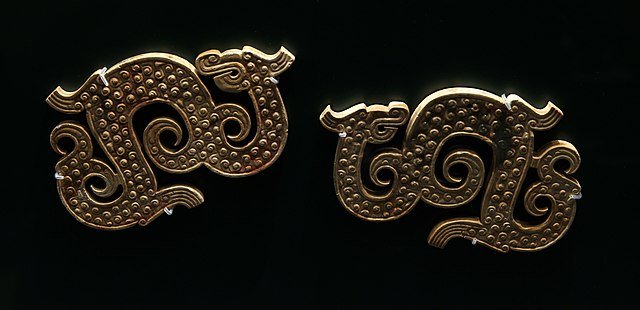
Figure 4. Zhou Dynasty Dragon Jade Figurines (c. 300s BC). Vassil, CC0, via Wikimedia Commons

Figure 5. A Zhou Dynasty Dragon Figurine (c. 300s BC). Paulo Alexandrino + Masayuki Kondo, CC BY-SA 4.0, via Wikimedia Commons

Figure 6. A Liu-Song Dynasty (AD 420–479) brick relief of a winged dragon displayed in Dengxian, Henan, China. http://www.qvip.net/article-12702, Public domain, via Wikimedia Commons
Dragons as Depictions of Embellished Dinosaur Fossils?
Many dragon depictions are more realistic representations of pterosaurs (often serpentine but sometimes either bird or bat-winged) dinosaurs and occasionally marine reptiles (frequently with no legs). Figure 7 shows a dragon that is clearly reptilian, having scales, four legs, and without the stylistic “whiskers” on its face (as is often the case in stylistic or imperial representations, see Figure 8).

Figure 7. Dragon on a wall in Haikou, Hainan, China. Anna Frodesiak, CC0, via Wikimedia Commons.

Figure 8. Chinese stone relief with dragon design, Ming, fourteenth–fifteenth century. Wmpearl, CC0, via Wikimedia Commons
In many Chinese bestiaries, dragons are shown alongside or in the same compilation with well-known animals like horses, deer, oxen, etc., and the ancient scrolls offer no evidence that these dragons were mythical.
But most historians dismiss this idea and relegate them to myth, or perhaps a cultural memory of seeing dinosaur fossils:
According to the products of innate and the endowments of the legends in China and the suburb adjoining territories, that The Dragon is a fabulous animal usually representing a monstrous winged and scaly serpent or saurian with a crested head and enormous claws and a monster, represented usually as a gigantic reptiles having a big lion’s claws and breathing fire. The Dragon seems to be the product of culture; apprehended multi origin around the different cultures in the world, based loosely on the appearance of a snake and possibly fossilized dinosaur remains. The concept of the Dragon is omnipresent in the socio–cultural structure and the initiation of rites and the passage from the childhood to death.2
Historical and Eyewitness Records Tell a Different Tale
The “Biographies of Immortals (《列仙传》), the oldest surviving Chinese hagiography of Daoist [demi-gods] written during the Western Han dynasty [206 BC–25 AD], even recorded how ancient people raised and rode dragons.”3 Some scholars doubt this earlier date, however, and place the work in second century AD during the Eastern Han period.
“In 80 [AD], eight yellow dragons were spotted in the Xiang River in present-day Yongzhou, Hunan province, according to the Book of Later Han (《后汉书》),” which covers the history of the Han dynasty from AD 6 to 189; “and in Supplement to the Annals of the Tang (《唐年补录》), Jia Wei (贾纬), a historian from the Five Dynasties (907–960 [AD]), recorded an incident where [a large] dragon, was found dead with a grievous injury to its throat.”4 To this author, it seems that this had to be a live specimen and not an unearthed fossil.
Interestingly, there have been large sauropod dinosaur fossils discovered not too far away from where the 40 m dragon was reported in 2021 of Hamipterus tianshanensis (estimated at 55 ft. or 17 m) and Silutitan sinensis (estimated 65 ft. or 20 m).5 And there are a couple of large pterosaur fossils discovered in China in the past hundred years, like Noripterus (wingspan up to 13 ft.) and Dsungaripterus (wingspan up to 16 ft.). If any of these creatures lived in modern-day China as post-flood creatures that came off the ark (and then speciated as they spread over the world), then they would make ideal dragon sighting accounts.
Draconian Pharmacies
In addition, nearly 100 different dragon sightings, from the Yuan (AD 1279–1368) and Ming Dynasties (AD 1368–1644) can be found in dynastic histories, local broadsheets, monastic accounts, and other sources.6 There were even medical texts for using dragon bones to cure disease:
For using dragon’s bones, first cook odorous plants; bathe the bones twice in hot water, pound them to powder and put this in bags of gauze. Take a couple of young swallows and, after taking out their intestines and stomach, put the bags in the swallows and hang them over a well. After one night take the bags out of the swallows, rub the powder and mix it into medicines for strengthening the kidneys. The efficacy of such a medicine is as it were divine!7
—Chinese medical scholar Lei Xiao (AD 420–477)
A rather extended discussion of the dragon appears in the Tso Commentary (Tso chuan) for the year 512 B.C. Dragon sightings must have already become infrequent by that time because the purpose of the commentary was to explain this rarity. The taming of dragons in former times and the eating of dragon flesh are mentioned, and the dragon is described as being a creature of the water. . . . In the Wu-shih pen-ts'ao (Mr. Wu’s Matéria Medica), attributed to Wu P'u (died 250 AD), we are told that dragon bones [for best use in pharmaceuticals] are from dragons who have died The greenish white ones are good. They are used to treat convulsions, and the teeth are taken for a long time they will “lighten” (ching) the body. The Ming-i pieh-lu (Additional Records of Famous Physicians), a work incorporating writings from the end of the Han to the time of T'ao Hung-chin (456–536), states that dragon bones are from caves along rivers in which dragons have died, and they can be collected without regard for the season. However, T'ao Hung-ching, who collected and annotated the work, disagreed with this view, claiming that the bones were shed (t'ui) by living dragons, not from [long] dead dragons.8
Over the centuries, the pharmacognostic knowledge regarding lung [dragon] drugs increased. In addition to the original lung-ku and lung-ch'ih, T'ao Hung-ching mentioned lung-nau (dragon brain), lung-chüeh (dragon horns), and lung-t'ai (dragon placenta) [most likely a mistranslation and should be dragon liver]. Not only were these products being found in more areas, but they also were beginning to be classified into different qualities. Hsiao (c. 470) says that the thin bones with wide marking lines were from female dragons and the wide bones with thin marking lines were from male dragons. Also the . . . black colored ones [bones] were of the poorest quality.9
As can be seen from the above discussions, eyewitnesses (in some cases, court scribes) described a real animal, and when they came across (or killed) a dragon’s body, they extracted organs (almost impossible to get from a fossil) and bones. The above comment about “black bones” signifies that they were aware of highly degraded bones, which also means that they wouldn’t have bothered grinding up permineralized fossil bones.
Revisionist History Revised
While it is almost certain that as the centuries rolled on and dragon sightings completely died off, local merchants would engage in some snake-oil salesmanship and dig up whatever bones they could find and grind them into powder. Some purported dragon bones have turned out to be from ice-age woolly rhinos, mammoths, and other Pleistocene (ice age) mammals, as well as large monitor lizards and other reptiles.
But to dismiss all dragon sightings and documents describing harvesting their organs and bones is quite drastic and unwarranted. It is done solely to reinforce the evolutionary dogma of millions of years separating mankind from dinosaurs and pterosaurs.
So anyone born from February 10, 2024, to January 28, 2025, is a dragon on the Chinese zodiac, as is anyone turning a multiple of 12 this year (so 12, 24, 36, 48, and so on). And, while the rest of the zodiac “prophesy” is mythical, you can be assured that at least this designation was not based on a mythical creature but real dragons which were sighted by the Chinese for hundreds of years and recorded in court documents. A plain reading of the first 11 chapters of Genesis clearly indicates that some of all the kinds of flying, creeping, and terrestrial animals came off the ark with Noah, and this would include dinosaurs and pterosaurs.
Footnotes
- China International Travel Service, “Dragon Robe, the Exclusive Clothing of Chinese Emperors,” Travel Guide, accessed January 30, 2024, https://www.cits.net/china-travel-guide/dragon-robe-the-exclusive-clothing-of-chinese-emperors.html#:~:text=The%20ritual%20of%20embroidering%20dragon,of%20the%20official%20attire%20system.
- D. G. Dharma Keerthi Sri Ranjan and C. Zhou Chang, “The Chinese Dragon Concept as a Spiritual Force of the Masses,” Sabaramuwa University Journal 9, no. 1 (December 2010): 67, http://dx.doi.org/10.4038/suslj.v9i1.3735.
- Yang Tingting, “China’s Long History of Dragon Sightings,” Ancient History, The World of Chinese, January 8, 2024, https://www.theworldofchinese.com/2024/01/chinas-long-history-of-dragon-sightings/.
- Tingting, “Long History of Dragon.”
- Chinese Academy of Sciences, “New Giant Dinosaurs Found in Xinjian, China,” accessed January 30, 2024, https://www.iybssd2022.org/en/new-giant-dinosaurs-found-in-xinjian-china/.
- James Carter, “Not Just a Metaphor: Dragons of Imperial China Show Us How People Lived,” Society & Culture, The China Project, July 5, 2023, https://thechinaproject.com/2023/07/05/not-just-a-metaphor-dragons-of-imperial-china-show-us-how-people-lived/.
- American Museum of Natural History, “Natural History of Dragons,” accessed January 30, 2024, https://www.amnh.org/exhibitions/mythic-creatures/dragons/natural-history-of-dragons.
- James P. McCormick and John Parascandola, “Dragon Bones and Drugstores: The Interaction of Pharmacy and Paleontology in the Search for Early Man in China,” Pharmacy in History 23, no. 2 (1981): 55–57, https://www.jstor.org/stable/41109277.
- McCormick and Parascandola, 57.
Recommended Resources

Answers in Genesis is an apologetics ministry, dedicated to helping Christians defend their faith and proclaim the good news of Jesus Christ.
- Customer Service 800.778.3390
- © 2024 Answers in Genesis


